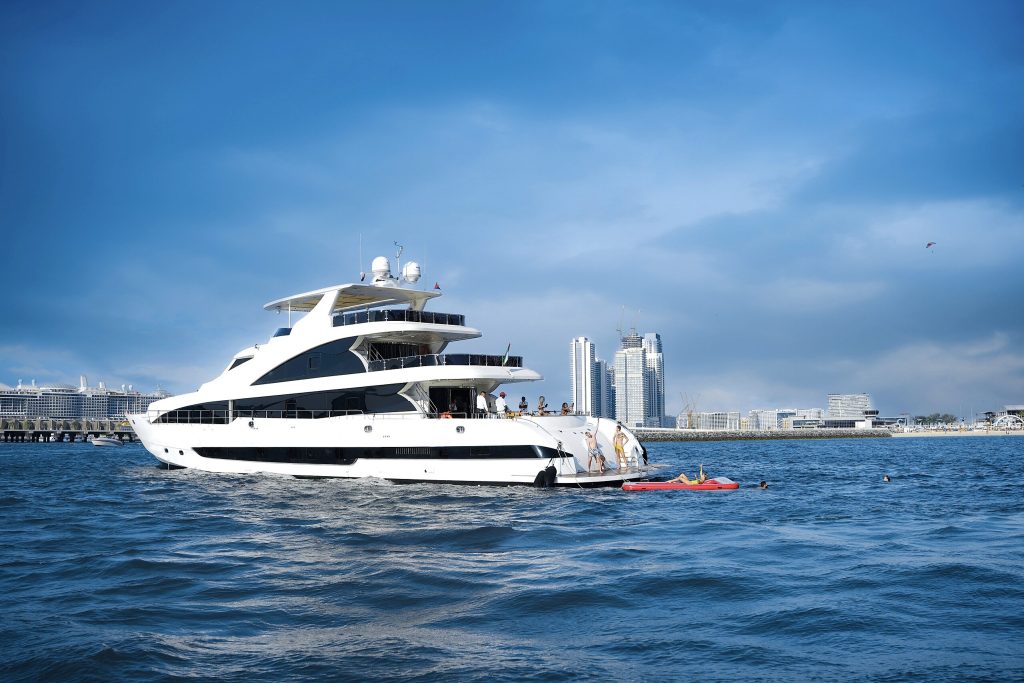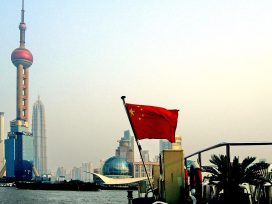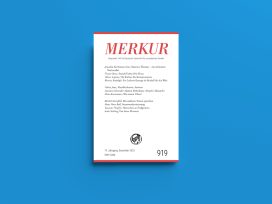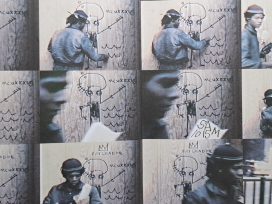Sometimes a phrase gets stuck in your head. Year after year, it pops up, often triggered by specific situations or places. For me, it is impossible to walk pass a cemetery without silently whispering, ‘history is a graveyard of aristocrats’. Pretentious as it may be, I always say it in Italian: la storia è un cimitero di aristocrazie. The phrase was coined by Vilfredo Pareto and encapsulates his view of how societies change – how certain elite groups disappear and are replaced by new ones, how power and its holders circulate. History, then, is like a graveyard filled with elite groups that are no longer elites.
Today’s researchers on elites rarely refer to Pareto (1848–1923) or any of the other classic theorists of elites – including Gaetano Mosca (1858–1941) and Robert Michels (1876–1936) – who in the late 19th and early 20th centuries were pioneers in the scientific study of elites. However, the almost timeless questions they posed – Who belongs to the elite? How does it maintain its position of power? How does it influence society at large? And how does it change over time? – remain omnipresent in contemporary research.
Foundations
Today, it takes a shoehorn approach to put together a symposium in Sweden on the subject of elites. Few researchers describe themselves as ‘elite researchers (the somewhat awkward term ‘elite researcher’ likely does not help). But the study of elites has always been used to understand society as a whole. To understand the reasons behind the lack of elite studies in Sweden and abroad, and in order trace the development of elite research over the past century, we must return to Pareto and his graveyard.
Ideas rarely emerge in a vacuum. The researchers that are often referred to as the ‘Italian school’ or the ‘classical elite theorists’ lived during an extremely dynamic period. Across Europe, the ‘old elites’ (the nobility) were being challenged by the ‘new elites’ (the bourgeoisie) as the estate-based society was transformed into a class society. However, according to the standard interpretation of Mosca’s, Pareto’s and Michels’ elite theories, the struggle between a new and an old elite was not their main concern. Instead, the idea of the people, or ‘the masses’, was identified as the underlying reason for the perceived need to formulate and argue for the importance of the function that elites play in societies. Population growth and the emergence of working class and revolutionary tendencies across Europe were seen by parts of the upper middle class, to which the classical elite theorists belonged, as a threat to societal stability.
There is an inherent ambiguity in the modern history of the elite concept. In the 18th century, the word ‘elite’ was the battle cry of the French bourgeoisie in its struggle against the nobility’s inherited privileges. However, by the late 19th and early 20th centuries, the concept had become an argument against the dangers of ‘the masses’ and their increased democratic influence. The early scientific use of the elite concept was therefore anti-Marxist; it was seen as inevitable that a small elite would, and should, rule over the rest of society. In Elementi di Scienza Politica (1896), considered the first major sociological study of elites, Gaetano Mosca presented elite rule as something akin to a natural law. Elites have always ruled and always will, according to Mosca; greater democratization would not change this power dynamic. In a more democratic society, a more organized minority would still govern an unorganized majority.
The connection between power and organization was central to Mosca, and later also to Michels. However, Mosca also believed that the ruling minority was simply intellectually superior and therefore better morally equipped to govern. Although historical continuity plays an important role in Mosca’s thinking, he also stressed the importance of change. In Elementi di Scienza Politica, he described how elites in the past had based their position of power on military might, whereas in his own time (the late-19th century) elites primarily gained and maintained power through economic wealth. Those who ruled were no longer the brave but the wealthy.
The process by which economic wealth became the primary means of attaining power encapsulates Mosca’s view of what drives history forward: an elite group establishes a monopoly and seeks to transfer its position to the next generation, while another group challenges its power in order to take over. When societies become economically and socially stable, the incumbent elite finds it easier to maintain and reinforce its position. In times of instability, on the other hand, the ‘challengers’ have greater opportunity to rapidly alter power relations.
Changes in the structure of the elite was not always rapid and dynamic, however. During periods of stability, where power was inherited from one generation to the other, slow processes of elite circulation often occurred. The ‘fresh blood’ that was introduced through the recruitment of capable and innovative non-elites into the incumbent elite gradually weakened the existing elite, until it was overthrown and replaced. Just as a snake sheds its skin, a society must periodically shed its elite.
There are many similarities between Gaetano Mosca and his countryman Vilfredo Pareto, but it is Pareto who became most closely associated with the idea of ‘elite circulation’. For Pareto, the rise and fall of elites was as close to a historical law as one could get, occurring in all types of societies throughout history. Pareto’s elite theories were part of a broader social analysis, which was presented in his book Trattato di Sociologia Generale (1916). In it, Pareto offered a broad definition of elites, encompassing all individuals who had reached the highest position in their respective fields (including thieves). Within such broad definition of elites, there was a further division between a ruling elite and a non-ruling elite – a distinction that was not as straightforward as it may seem. Like Mosca, Pareto believed that elite circulation could occur at both an individual and on a group level. The greatest danger to society was in fact a lack of circulation: the ruling elite had to ‘sacrifice’ its most incompetent members. A dramatic overthrow of the ruling elite occurred when the most capable individuals in a society were not admitted into the ruling class.
Borrowing from Niccolò Machiavelli (1469–1527), Pareto used the metaphor of ‘foxes’ and ‘lions’ to describe the interplay between conservative and risk-taking individuals and forces within the ruling elite. Although this comparison may seem closer to fables than to social theory, a mix of foxes and lions was seen as the optimal combination in order for an elite group to uphold its position. The ruling class should therefore recruit the best people from the class that were ruled. Here, the importance of organization became relevant once again: without its best members, the group that were governed could not organize effective resistance against the ruling class.
The third scholar commonly included among the classical elite theorists, Robert Michels, also emphasized the importance of organization. Michels’ research was more specifically focused on modern political parties, but his concept of the ‘iron law of oligarchy’ has become a touchstone idea within the field of elite research. This thesis, presented in his book Zur Soziologie des Parteiwesens in der modernen Demokratie (1911), argues that all organizations inevitably develop oligarchic tendencies. Michels case study was the German Social Democratic Party (SPD). The fact that oligarchic structures emerged within a party whose very purpose was to fight oligarchy was, to Michels, compelling evidence of the theory’s explanatory power.
These oligarchic tendencies stemmed from a Catch-22 situation: the working class needed to organize in order to gain power and influence, but the process of organization itself created an elite within the party. The struggle against oligarchy had merely resulted in a new oligarchy. According to Michels, this was not only true for political parties. The paradox lay in the fact that strong organizations developed hierarchical leadership structures, and the large, unorganized masses were naturally drawn to strong leaders. The ruling group did everything it could to maintain its power (often at the expense of its original ideals), becoming insular and closed off, until it eventually resembled a caste: today’s revolutionaries are tomorrow’s reactionaries.
Although Michels believed that democratic governance was preferable to the alternatives, the idea that a small, capable minority would inevitably rule over an unorganized and less capable majority was highly problematic given the historical developments in Europe during the 1930s and 1940s. The connection between the Italian school’s elite theories and the ideological justifications for Italian fascism and German Nazism led to a re-evaluation of the elite concept. Referencing Mosca, Pareto or Michels became highly suspicious.
Rebuttals
In the post-war period, elite research moved away from the notion of a singular elite and instead focused on elites in the plural. This shift was, in part, an effort to establish distance from the Italian school and the historical experiences of World War II. The idea of a ‘ruling class’ was replaced by the concept of pluralistic, functional elites – academic, political, economic, cultural, and so on. The emphasis now lay on studying various elite positions, on the premise that different elite groups created a balance of power, preventing any single group from gaining excessive control over society. Researchers also began to examine the boundaries and relationships between these elite groups (as well as their interactions with society at large).
However, the Italian school’s idea of a singular elite, a ‘ruling class’, has persisted under new names. One of the most established reformulations was offered by the sociologist C. Wright Mills’ (1916–1962), whose concept of the ‘power elite’ describes the fusion of different elite groups on the basis of shared interests in order to govern the country. In post-war America, according to Mills, this power elite consisted of the economic, political and military elites. The blending of these elites was facilitated by the fact that many of those in elite positions shared a common social background and lifestyle – they had attended the same schools and universities, were members of the same social clubs, or co-owned summer homes.
A significant portion of post-war elite research therefore focused on the social environments that linked different elite groups, primarily schools and universities, but more recently also residential areas. This type of research was often based on the work of the French sociologist Pierre Bourdieu, who viewed such environments as central to the transmission of a particular lifestyle or worldview (‘habitus’) passed from elite parents to their children. Elite status, according to this position, is not just something one is born into; it is something that must be instilled from an early age. Illustrative examples from Swedish elite research include historian Esbjörn Larsson’s studies of habitus formation among young aristocrats at the Karlberg Military Academy and economist Mikael Holmqvist’s work on how the affluent Stockholm suburb of Djursholm ‘consecrates’ its residents and shapes them into leaders. Due to globalization’s impact on society at large, elite research has, in recent years, increasingly focused on transnational and global elite groups and the institutions and environments that shape them.
Although contemporary elite theory – both in Sweden and internationally – primarily draws on Mills and Bourdieu, many of the ideas of the Italian elite theorists quietly persist. For example, Gaetano Mosca argued that biology was not the reason why elite positions are inherited but socialization into an elite environment. A significant difference between today’s elite research and that of the early 20th century, however, is the increased fragmentation and emphasis on the existence of multiple elites rather than a single ruling class. If Mosca, Pareto and Michels are considered the original elite theorists, Mills and Bourdieu serve as representatives of the second, critical wave of elite researchers.
Although some scholars have argued that we are currently in a third wave of elite research, contemporary elite studies should rather be seen as a methodological development – employing more sophisticated network analyses, ethnographic studies, and other methods – of the ideas formulated by Mills and Bourdieu. There has been no clear break from or rejection of these thinkers. The core idea remains that elite research is the study of inequality, but from ‘above’ rather than ‘below’. Researchers study the wealthy to understand why some remain poor and examine those in power to understand why others have less influence.
In recent decades, reports on growing inequality have become more frequent. Inequality is not just about economic disparities but also health, education and life expectancy. As a result, interest in elites – both in research and in public discourse – has revived. Scholars aligned with the second wave of elite research, who primarily view elite studies as an examination and critique of inequality, argue that this is a compelling reason for further research on elites. However, the growing public interest in elites and the popular use of the elite concept is not without its challenges.
There has been criticism from within the field regarding the broad use of the term ‘elite’, to the extent that it risks losing its explanatory power. Now that the term is increasingly employed in public discourse, it risks becoming even more diluted. The term ‘elite’ has long carried negative connotations, especially in Sweden (except when referring to athletes or soldiers). More recently, however, political rhetoric – particularly that of populist movements – has increasingly portrayed ‘the elite’ as an enemy. While conspiratorial ideas about a secret global elite controlling society are not new, they have gained renewed traction. Again, this is nothing new: throughout the history of elite research, the concept of ‘elite’ has constantly been ‘hijacked’ and repurposed in ways that make it difficult to use the term in scientific contexts.
Avoidances
In the preface to the anthology Eliterna som abdikerade (‘The elites that abdicated’, 1998), Peter Luthersson and Anders Björnsson used the word beröringsskräck (fear of contact) to describe the Swedish research community’s relation to elites. ‘Swedish social research and historical scholarship have forgotten to take an interest in societal elites,’ they claimed. The idea that researchers have ‘forgotten’ or ‘neglected’ elites is not uniquely Swedish; the same has been said of elite research in the US, the UK and Germany.
That sociology has paid more attention to the poor than to the rich is a recurring observation. In research proposals, names of university courses, and book and article titles, the term ‘inequality’ is often used in combination with the concept of ‘elites’. The trend is illustrated in Shamus Khan’s frequently cited definition of the research field: ‘The study of elites is the study of power and inequality from above.’ This could be interpreted both as a sign of anxiety that the topic lacks relevance, and as a way to increase the chances of research funding.
However, a more accurate description of the situation would be that while the concept of ‘elites’ has been neglected, the study of individuals, groups and institutions that hold power and status in society has continued unabated. Clearly, there is an aversion to the term ‘elite’. Instead, researchers use terms such as ‘super-rich’, ‘bourgeoisie’, ‘power holders’ or ‘oligarchs’. The avoidance of the term ‘elite’ is partly a consequence of the fact that neither Max Weber nor Karl Marx used it. For Marxist-influenced scholars, it distracts from class analysis, while those who view elites in terms of power distance themselves from the Marxist analysis of class and capitalism.. Mills, who avoided the concept of class in favour of ‘power elite’, belonged to the latter category.
Despite this mutual reluctance to merge the concepts of ‘class’ and ‘elite’, there have been attempts to reconcile them. The term ‘ruling class’ is one such attempt, as it incorporates both the class aspect and the position of power. However, these efforts often result in vague definitions – elite is used in the title for marketing purposes, while the actual focus of the text is more often on social class.
Even the key scholars in the field of elite research have avoided the elusive concept of elite. Bourdieu, for example, preferred to speak of la classe dominante rather than elites. Mosca used the expression classe dirigente, which was translated into English as ruling elite; and even Pareto frequently used terms like aristocracy, upper class, the political class, and the ruling class to describe elites (la storia è un cimitero di aristocrazie). Since its emergence within the Italian school, the elite concept has lacked a clear definition.
One consequence of this is that much of what is considered elite research appears in contexts where the term is used sparingly or not at all. Academic books on topics such as the nobility, the bourgeoisie, or the 19th-century Swedish gymnasium should therefore be considered as elite studies, even if the authors themselves rarely or never use the term. Research on elites can therefore be viewed more as area studies, an interdisciplinary academic field focused on a topic. And ‘elite’ can be seen as an umbrella term, which also covers those who never use the word ‘elite’ in their studies on individuals and groups.
The common denominator is the notion that power, inequality and society at large also needs to be studied ‘from above’. The regular emergence of new terms to describe those who hold power in society should be seen as a strength rather than a weakness of the field. It reflects an ongoing debate about how to better understand power dynamics in society. History is a graveyard of outdated elite definitions.







